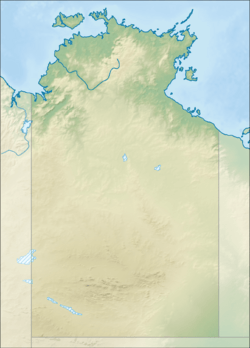Towns River facts for kids
Quick facts for kids Towns |
|
|---|---|
|
Location of the Towns River mouth in the Northern Territory
|
|
| Country | Australia |
| Territory | Northern Territory |
| Physical characteristics | |
| Main source | Arnhem Land, Australia 29 m (95 ft) |
| River mouth | Limmen Bight, Australia 0 m (0 ft) 14°55′46″S 135°25′31″E / 14.92944°S 135.42528°E |
| Length | 84 km (52 mi) |
| Basin features | |
| Basin size | 5,432 km2 (2,097 sq mi) |
The Towns River is a river located in the Northern Territory, Australia. It is an important waterway in this part of the country.
Contents
Where the River Flows
The Towns River starts in a region called Arnhem Land. From there, it flows towards the east. Eventually, the river empties into the Limmen Bight. This area is part of the larger Gulf of Carpentaria.
The River's Mouth
Where the river meets the sea, it forms an estuary. An estuary is a special place where fresh river water mixes with salty ocean water. The Towns River estuary is affected by the tides. It is also very clean and natural. This area of open water covers about 55 hectares. It is surrounded by a large area of mangrove trees. Mangroves are special trees that grow in salty coastal waters.
River Size and Area
The area of land that collects water for the Towns River is called its catchment. This catchment covers a huge area of about 5,432 square kilometers. It is located between the Roper River to the north and west, and the Limmen Bight River to the south. Each year, the river carries a lot of water, about 500 gigaliters on average.
Amazing Fish Life
The Towns River is home to many different kinds of fish. Scientists have found ten species of fish living here. Some of these include;
- Glassfish
- Barred Grunter
- Fly-specked Hardyhead
- Salmon Catfish
- Mouth Almighty
- Barramundi
- Rainbowfish
- Bony Bream
How the River Got Its Name
The Towns River was likely named by an explorer named Francis Cadell. He explored this area in 1868. Cadell named the river after Robert Towns. Robert Towns was a well-known person who also had the city of Townsville named after him. The river's name also appeared on a map made by George Goyder in 1888.
Images for kids



